Announcement
We're excited to announce the launch of Era 2.0 ! This recent evolution of Era expands on the core vision of a unified database operating model while delivering simplicity, performance, availability, and security across private and public clouds.
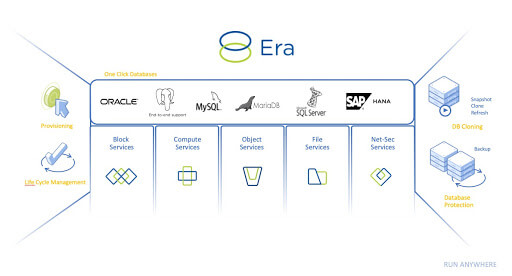
What Is New In Era 2.0
Multi-cluster & Public Cloud Support
From a single Era management plane, DB Ops teams can now rapidly provision standalone and highly available, multiregion and multicloud databases. This means databases provisioned by Era and running on Nutanix hyperconverged infrastructure (HCI) work and behave the same way, with the same best practices, independent of where they run.
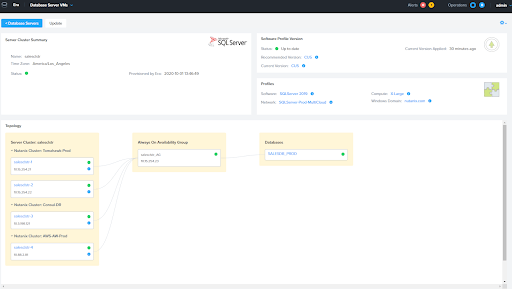
Era has expanded it’s time machine, used for cloning and recovery, to provide a global view of database backups with centralized control over where the backups are stored, who can access them and how long the data is retained. Databases cloned by Era, (one-click copy and paste of a database from any point in time with automated refresh schedules), can now span multiple Nutanix clusters in different regions or clouds, allowing for secure data flow from production into downstream test, dev, and reporting environments.
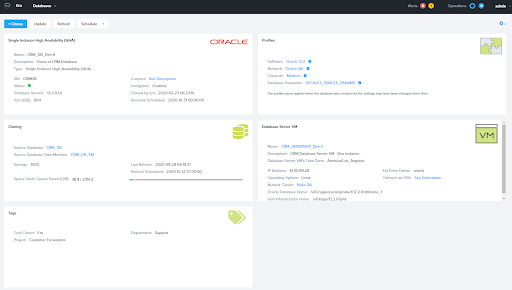
DB Ops teams are no longer limited to supporting databases in silos with different APIs and management interfaces for each cloud. Instead, they have visibility and control over their entire database fleet. What’s more, standards defined in Era for provisioning, patching, protection, and cloning can be defined one time and applied across multiple locations, thereby ensuring greater consistency and compliance.
Starting with support on the AWS cloud platform, customers have the freedom of being able to determine whether they want to run their database workloads in a public cloud environment, on-premises, or both. Using the same control and data plane across public and private clouds makes for seamless data mobility across the different environments. DB Ops teams benefit from the simplicity and ease-of-use of one operating model for all their databases across different DB engines and use cases–whether it be production tier-one databases in the cloud, scaleable Dev/Test, or multicloud DB-centric disaster recovery (DR).
Data Protection
Data integrity and protection is paramount for your database estate. With Era 2.0, admins can take transaction-consistent backups of SQL Server, Oracle, or PostgreSQL databases in a matter of minutes. Via an automated schedule or on demand, a database backup captured in a time machine can be replicated across regions with unique retention SLAs per location.
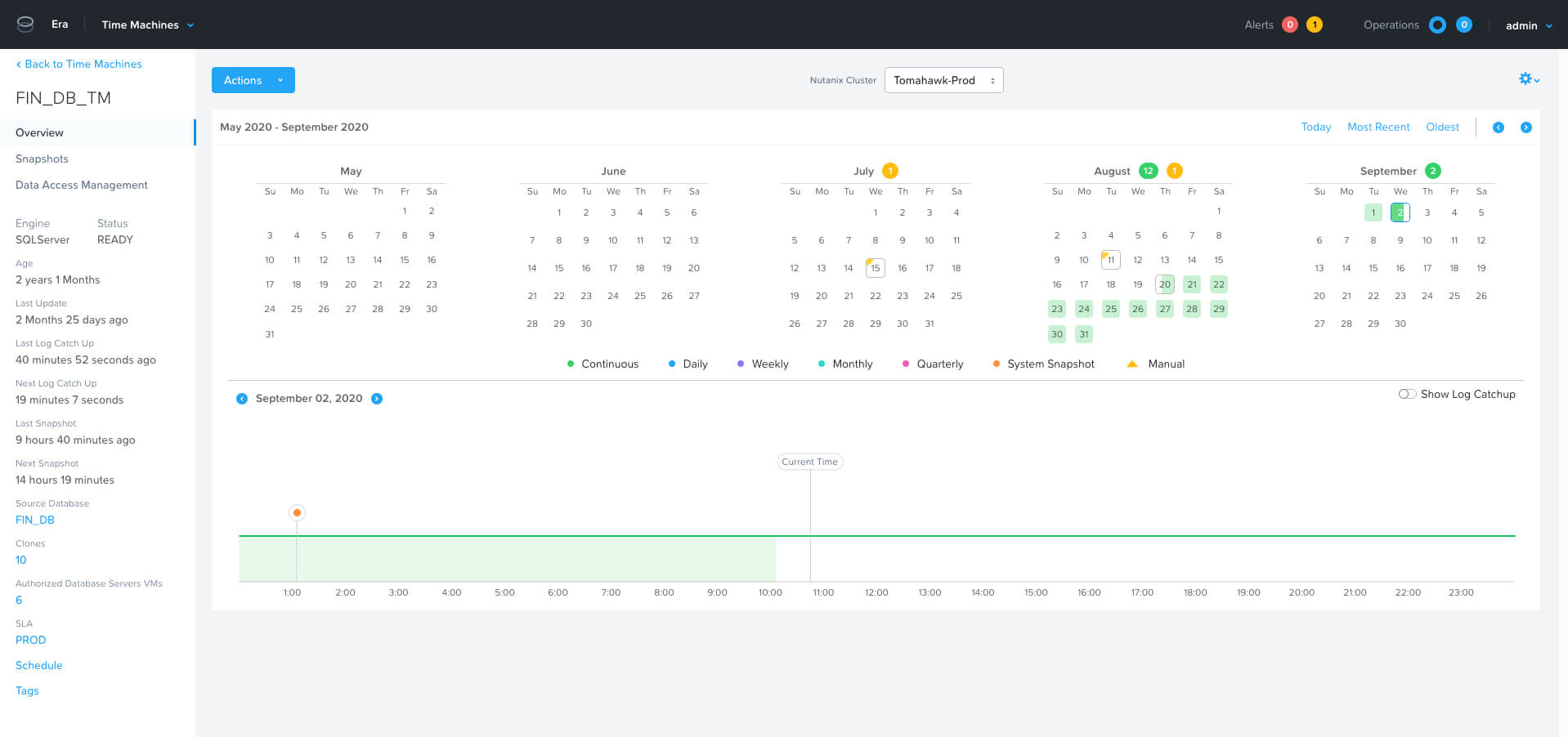
In addition, since the time machine is database aware, in the case of database clusters such as Oracle RAC, SQL Server AG, and PostgreSQL, the backups follow the failover status of the cluster. For example, if you had a failure in your database cluster on the production site, the time machine would identify that and switch backups to the new writable primary. The same thing works in a multicluster context. If your entire primary site goes offline and the async replica in your DR site becomes writable, Era will catch this and start backing up changes from the DR site.
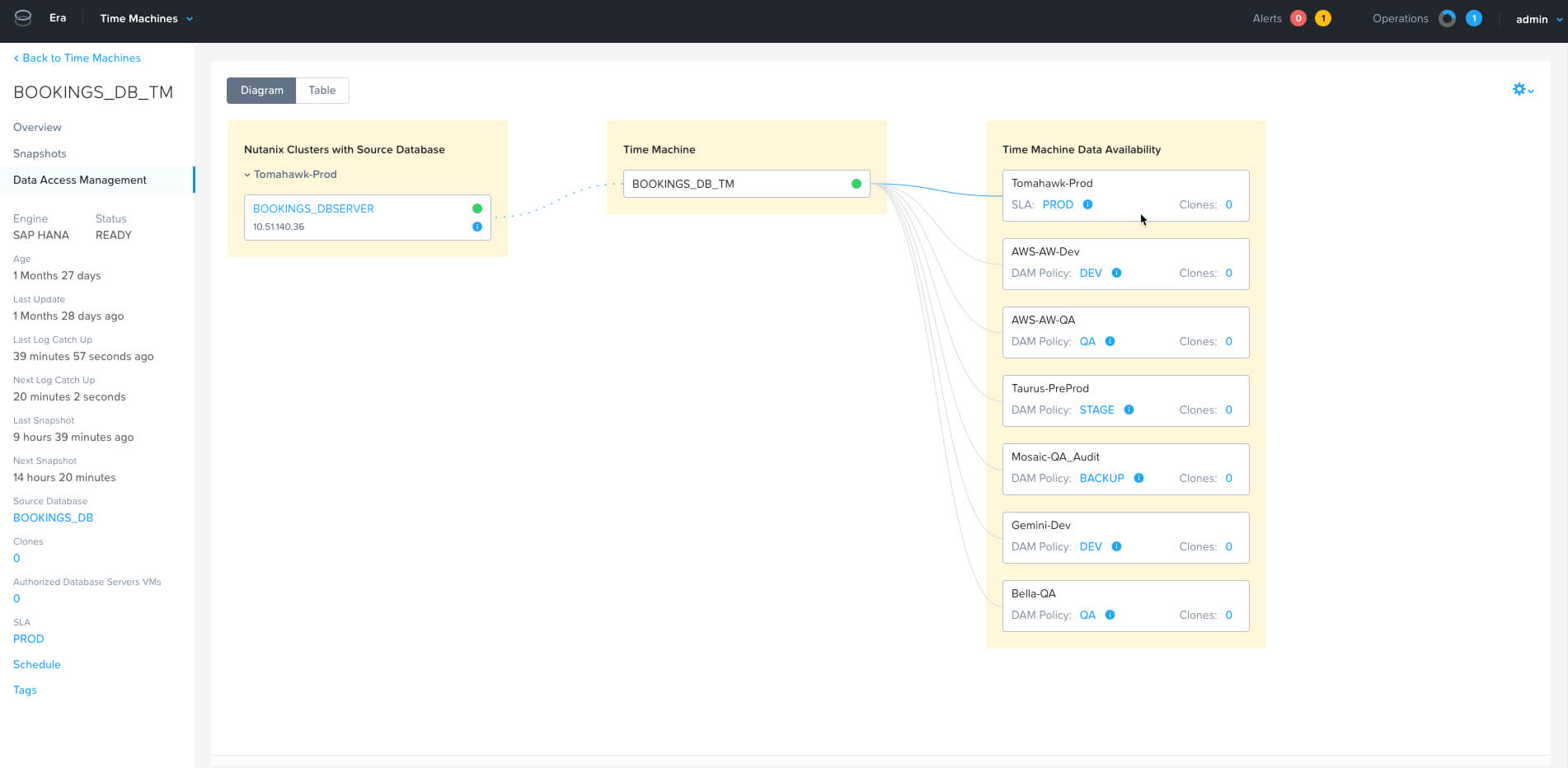
Once a backup is taken, a database can then be restored either side by side with the original or the original can be overwritten from a backup. When leveraging the in-place restore capability, Era can restore a database in minutes to any point in time by swapping out the disks of a database and replaying any needed database logs. In addition, Era provides an option to check for and incorporate any logs found on the DB server during the restore into the backup set, thereby allowing you to recover your data with minimal to no data loss.
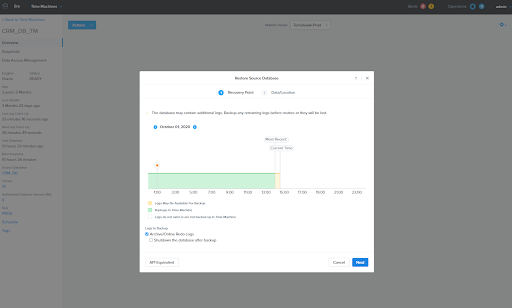
This minimizes both service outages and data loss, saving time and costs associated with downtime, which, according to the Ponemon Institute, is over $9,000 per minute.
Database Server Patching
Database patching is a cumbersome and time consuming process for database administrators, requiring outages and coordination from different teams. Era 2.0 addresses this by allowing you to define standardized gold images as software profiles (containing your choice of OS and database versions) and then apply new DB patches as versions to that software profile. This can be used to provision new DB servers or patch existing servers to that gold standard.
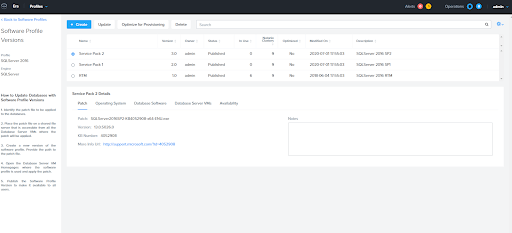
Database patching in Era 2.0 has been extended to include both single instance and database clusters for Oracle, SQL Server, and PostgreSQL. Patching of database clusters is non-disruptive, as Era applies patches in a rolling fashion and flips any needed roles in the database cluster to ensure the entire cluster is upgraded without impacting the database service. Patching in Era is also very low risk; admins can easily duplicate the environment to be patched using the time machine’s cloning capability to bring up a thin copy of a database into a test environment where the patch can be safely tested before getting rolled out to production. Once a new patch version has been tested and published, any DB server that has subscribed to that software profile can apply it on a scheduled or on-demand basis.
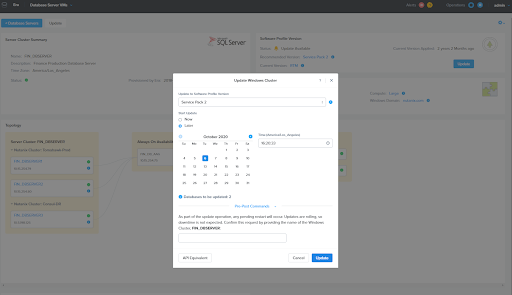
This capability greatly enhances database operations for admins who typically run multiple database engines, simplifying their administrative load even further by enabling them to apply patches across the entire fleet of databases, de-risking the patching process, saving time, and reducing operational overhead.
Support for SAP HANA at Scale
Nutanix is delighted to add SAP HANA to its database engine portfolio. By bringing it under the Nutanix umbrella, SAP HANA customers can experience all the cloud-like benefits Nutanix Era has to offer, including drastically simplifying common system refreshes in dev and test environments that take just minutes.
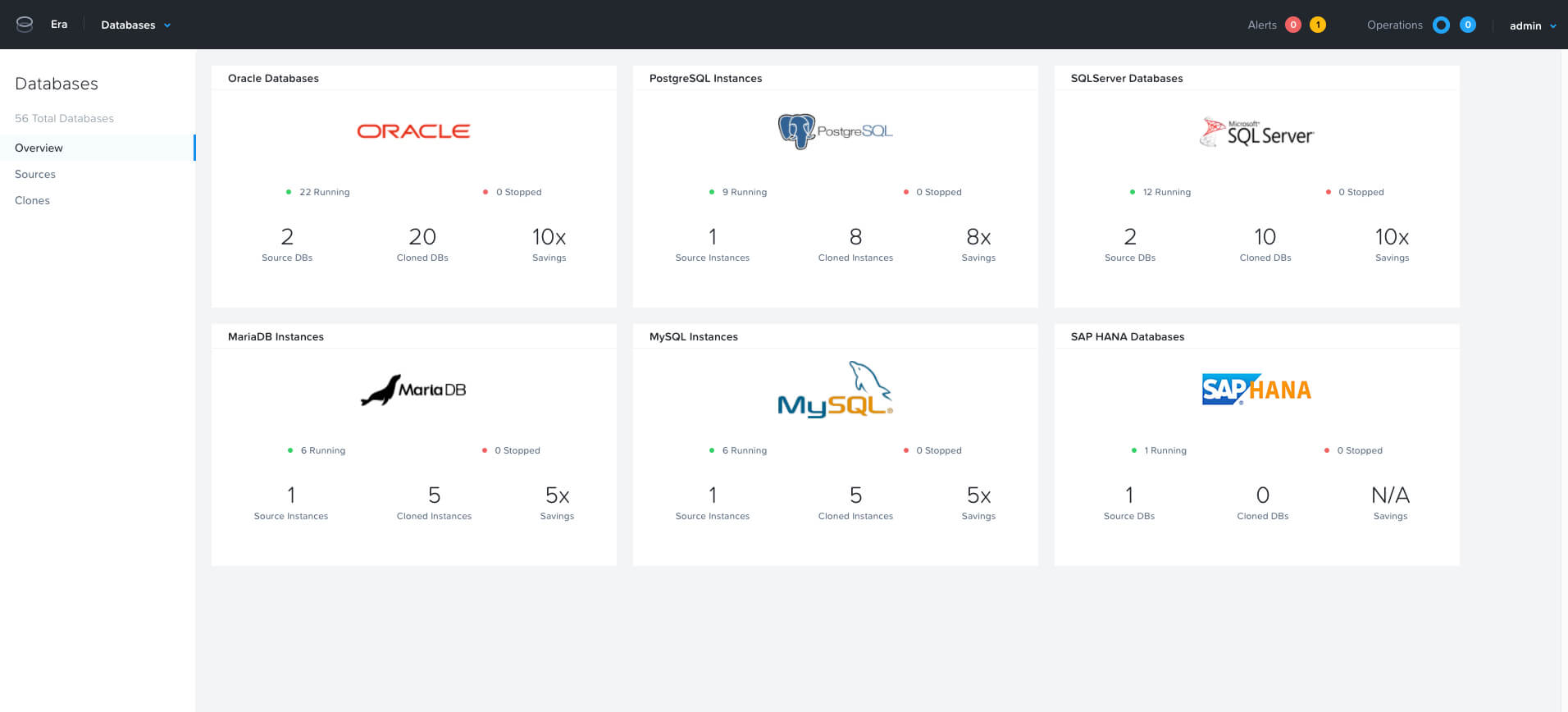
24x7 Support of PostgreSQL with Nutanix Era
Nutanix Era provides customers the ability to simultaneously manage multiple database engines under a single easy-to-use control plane coupled with services that enhance and augment database lifecycle management in a hybrid and multi-cloud environment. One of the most popular relational database engines in the market, PostgreSQL is one of several key databases supported by Nutanix. Nutanix is offering complete peace-of-mind by offering 24/7 support for community editions of PostgreSQL. This end-to-end support experience eliminates concerns over the potential back and forth between vendors should a potential support issue arise, resulting in more rapid time to resolution and improved customer satisfaction.
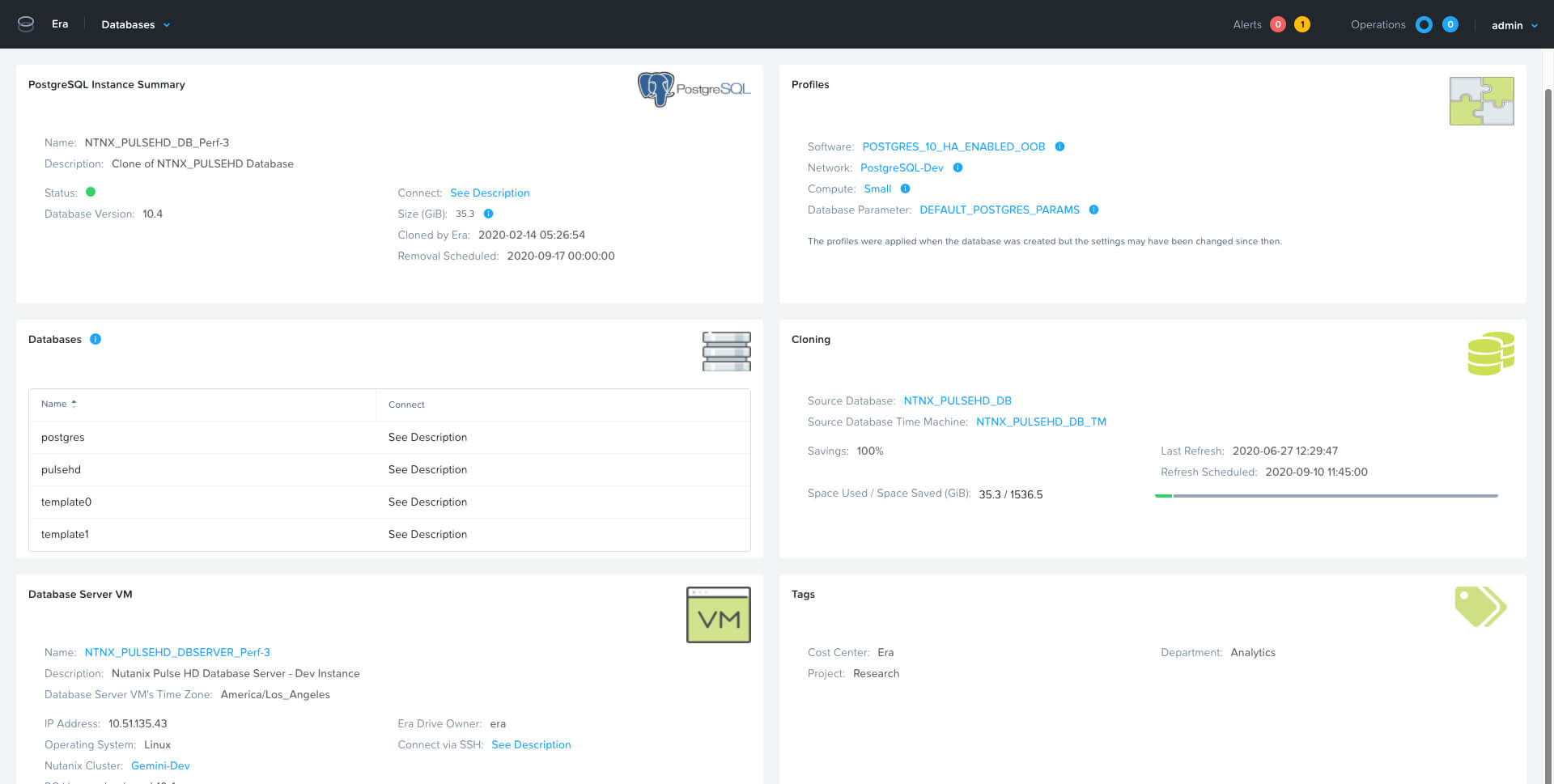
Fully Managed Database as a Service Solution with HCL Technologies
For customers seeking fully managed database services as a preferred Opex model, Nutanix has partnered with next-generation global technology company HCL to offer a joint solution powered by Nutanix. SKALE DB powered by HCL and Nutanix is a secure, scalable, cloud-ready managed DBaaS offering that leverages the management simplicity and automation of both Nutanix Era and Prism. The bundled single stack reduces the customer’s cost of ownership and enhances their experience through a pay-per-use model.
How to try it out
Does the simplicity and efficiency of Nutanix Era sound too good to be true? Experience just how easy provisioning, cloning, patching, backing up, and restoring can be. Take a free Test Drive of Nutanix Era at: www.nutanix.com/test-drive-database-operations.
© 2020 Nutanix, Inc. All rights reserved. Nutanix, the Nutanix logo and all Nutanix product, feature and service names mentioned herein are registered trademarks or trademarks of Nutanix, Inc. in the United States and other countries. All other brand names mentioned herein are for identification purposes only and may be the trademarks of their respective holder(s). This post may contain links to external websites that are not part of Nutanix.com. Nutanix does not control these sites and disclaims all responsibility for the content or accuracy of any external site. Our decision to link to an external site should not be considered an endorsement of any content on such a site. Certain information contained in this post may relate to or be based on studies, publications, surveys and other data obtained from third-party sources and our own internal estimates and research. While we believe these third-party studies, publications, surveys and other data are reliable as of the date of this post, they have not independently verified, and we make no representation as to the adequacy, fairness, accuracy, or completeness of any information obtained from third-party sources.
This post may contain express and implied forward-looking statements, which are not historical facts and are instead based on our current expectations, estimates and beliefs. The accuracy of such statements involves risks and uncertainties and depends upon future events, including those that may be beyond our control, and actual results may differ materially and adversely from those anticipated or implied by such statements. Any forward-looking statements included in this post speak only as of the date hereof and, except as required by law, we assume no obligation to update or otherwise revise any of such forward-looking statements to reflect subsequent events or circumstances.